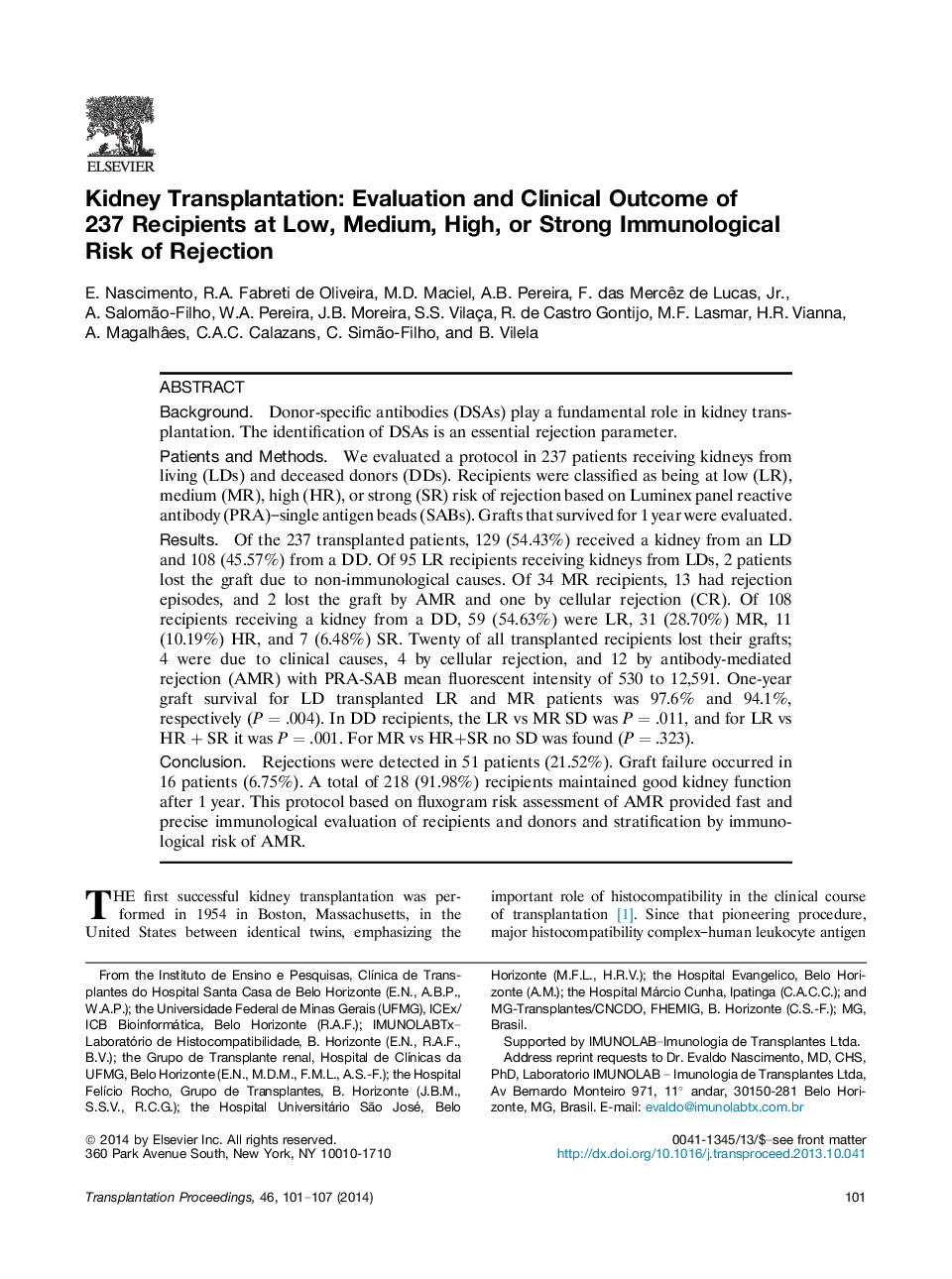| کد مقاله | کد نشریه | سال انتشار | مقاله انگلیسی | نسخه تمام متن |
|---|---|---|---|---|
| 4256749 | 1284533 | 2014 | 7 صفحه PDF | دانلود رایگان |

BackgroundDonor-specific antibodies (DSAs) play a fundamental role in kidney transplantation. The identification of DSAs is an essential rejection parameter.Patients and MethodsWe evaluated a protocol in 237 patients receiving kidneys from living (LDs) and deceased donors (DDs). Recipients were classified as being at low (LR), medium (MR), high (HR), or strong (SR) risk of rejection based on Luminex panel reactive antibody (PRA)–single antigen beads (SABs). Grafts that survived for 1 year were evaluated.ResultsOf the 237 transplanted patients, 129 (54.43%) received a kidney from an LD and 108 (45.57%) from a DD. Of 95 LR recipients receiving kidneys from LDs, 2 patients lost the graft due to non-immunological causes. Of 34 MR recipients, 13 had rejection episodes, and 2 lost the graft by AMR and one by cellular rejection (CR). Of 108 recipients receiving a kidney from a DD, 59 (54.63%) were LR, 31 (28.70%) MR, 11 (10.19%) HR, and 7 (6.48%) SR. Twenty of all transplanted recipients lost their grafts; 4 were due to clinical causes, 4 by cellular rejection, and 12 by antibody-mediated rejection (AMR) with PRA-SAB mean fluorescent intensity of 530 to 12,591. One-year graft survival for LD transplanted LR and MR patients was 97.6% and 94.1%, respectively (P = .004). In DD recipients, the LR vs MR SD was P = .011, and for LR vs HR + SR it was P = .001. For MR vs HR+SR no SD was found (P = .323).ConclusionRejections were detected in 51 patients (21.52%). Graft failure occurred in 16 patients (6.75%). A total of 218 (91.98%) recipients maintained good kidney function after 1 year. This protocol based on fluxogram risk assessment of AMR provided fast and precise immunological evaluation of recipients and donors and stratification by immunological risk of AMR.
Journal: Transplantation Proceedings - Volume 46, Issue 1, January–February 2014, Pages 101–107